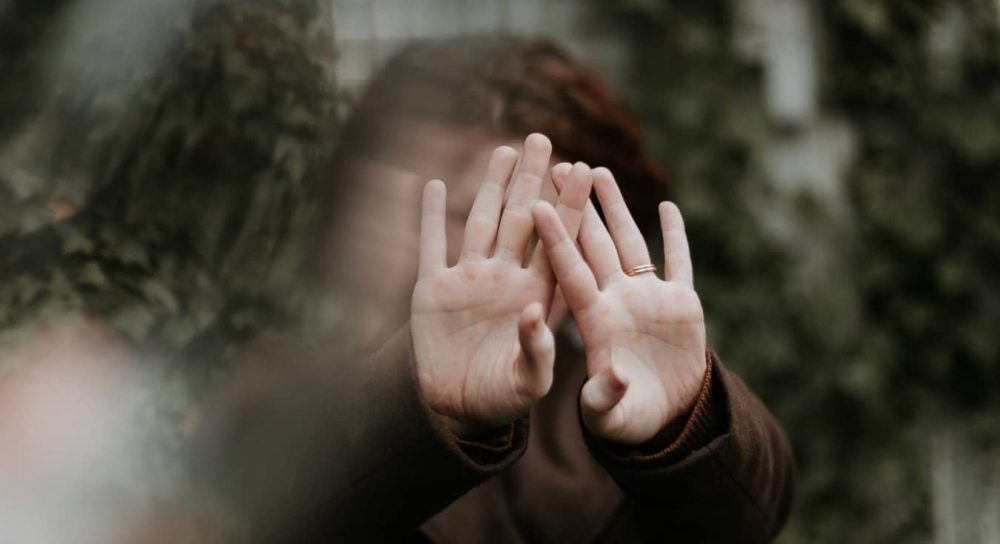Paquita de Zulueta is an almost-retired GP, Senior Honorary Clinical Lecturer Department of Primary Care & Public Health Imperial College, Clinical ethicist, CBT therapist, Coach and Mentor. She is on Twitter: @PdeZ_doc
The pandemic, not yet over, has already significantly changed how primary care functions. General Practitioners (GP’s), typically innovative and adaptable, swiftly switched to ‘remote’ consulting in March, with telephone and video consultations the norm and face-to-face the exception, albeit still available.1 GP’s express concerns that the ‘flight to the virtual’ may lead to losses, including the sapping of energy and joy and an increase in health inequalities.2 But there is another deeper issue at stake. The loss of touch in our personal encounters threatens the wellbeing of all of us and in particular for those who are vulnerable and living alone. In the context of our professional encounters, the physical examination, aside its diagnostic value, is an important mode of communication and a skill that requires embodied learning and practice – ‘body pedagogics’.3 We should be wary of discounting its value.
The human skin and the ‘magic’ of touch:
Giles Dawney in the BJGP posed the question: “Could our skin be far more than just a barrier to the elements?”4 My answer is a definite “yes”. Ashley Montagu, in his seminal book reminds us that the skin “is the oldest and the most sensitive of our organs, our first medium of communication and our most efficient protector.”5 The largest and most versatile of our sense organs, it holds an astonishing number of sensory receptors for heat, cold, touch and pain, giving us an integrated sense of our bodies. Montagu claims that touch is more powerful than language and central to human life, providing us with our most fundamental means of contact with the external world. Research indeed confirms that the skin is a social organ, coding interpersonal interactions, and enabling us to develop our sense of ‘felt security’, and connectedness. Touch communicates emotion in a ‘robust fashion’ and people can discern with a high degree of accuracy anger, fear, sadness and disgust, as well as happiness, gratitude, sympathy and love.6 Research shows that touch – in particular affectionate touch – is also key to relational, physical and psychological wellbeing in adults.7 Affectionate touch buffers one to stress, calming us by activating the parasympathetic system, releasing oxytocin, serotonin and endogenous opioids, thus additionally acting as an anaesthetic.8 Touch enhances cooperation and trust. And yet, despite this rich evidence from a variety of disciplines, touch is poorly researched in the medical field and curiously lacking in medical and bioethical discourse.
Touch is more powerful than language and central to human life.
When we are stressed and feeling vulnerable, we long for and need kind human touch. This is why the ‘social distancing’ imposed by this pandemic is so cruel and dehumanising for all of us, but particularly for those who live alone, for the vulnerable, the sick, the bereaved and the dying, for caregivers who are denied access to their loved ones and for healthcare professionals looking after COVID19-infected patients who fear to touch their partners and children when they go home. We have all read or heard the harrowing stories from caregivers and from those who have lost their loved ones in COVID times.
The physical examination:
Verghese has made a passionate call for the reinstatement of the physical examination arguing that it not only avoids unnecessary tests, but also helps to develop trust, empathy and relationship building.9
In my thirty-five years as a general practitioner I have been surprised by the revelations that have flowed from the many physical examinations. This practice has often felt as an almost sacred ritual, eliciting trust and information that bypasses the verbal and visual. Yes, there were the diagnostic surprises – the unexpected lump, the hidden bruises or scars, the unsuspected breech, or perhaps a ‘secret’ tattoo or body-piercing. But often the revelations were stories of pain and suffering – sexual assault in childhood, torture in another country, a coercive or illicit relationship, an unmourned bereavement, hidden fears. And as I percussed the chest, or palpated the abdomen, or even undertook an intimate examination, I would hear “I have never told anyone about this doctor”. Touch became a door to a hereto undisclosed inner world. I use the examination to further the dialogue, to hear more about people’s lives, who they are, what they do, their family, their hobbies. And this dialogue is conducted at two complementary levels – with our speech and our bodies. The intimacy of contact encourages a more humane and authentic conversation than peering at blood test or Xray results on a computer screen. This is not to disparage the usefulness of test results or the telephone consultation and telemedicine. They may well be lifesaving in some circumstances and do offer convenience, although not necessarily speed.
What seemed to give them solace…. was when I held their hands
Visiting the frail elderly when working for the emergency service, I was struck by their anguished loneliness. Yes, the carer had filled the dosset box, and checked that they ‘taken their meds’, had eaten (maybe), but what seemed to give them solace, to elicit a tentative smile, or even tears of relief was when I held their hands, gnarled and trembling, in a firm, warm clasp. They longed to have a chat, to reminisce, to share a cup of tea. I would try to bring some humanity to the encounter, but time pressures limited the scope for this.
Phenomenology – a philosophy of embodiment in which mind and body are inseparable – offers us rich insights into touch. Merleau-Ponty reminds us that the lived body is reversible or ‘double-sided’ in that it is both an experiencing subject and a material object in the world.10 This ‘dual existence’ as both consciousness and physical matter is probably unique to humans. Touch brings us in contact with others, but also with our own embodiment. When carrying out a physical examination we are observers and examiners, but also subjects who are responding to our patients’ responses and perceptions of us. It is a form of dynamic dialogue and we oscillate between our subjectivity and objectivity.11 In the intimacy of the physical examination we, as both patients and clinicians, render ourselves more open, more vulnerable. The etymology of the word is relevant: The Latin intimus signifying ‘innermost’, and intimare to ‘impress’, or ‘make familiar’.
The lived body is … both an experiencing subject and a material object in the world.
The avoidance of touch may be linked to the understandable fear of being seen as invasive, of transgressing boundaries, or even being accused of sexual molestation – but is there also an unspoken fear of engagement, of getting ‘too close’ to our patients, of being ‘touched’ by their suffering?
A typology of touch:
Touch can help us as clinicians to discern, detect and diagnose, but can also allow us to express empathy, reassurance, comfort, and presence. A study of GP’s and patients’ perceptions regarding touch revealed that all patients and most doctors believed that ‘expressive touch’ improved communication.12 ‘Healing touch’ has a long history dating from classical times with the myth of Asclepius, the Greek god of medicine. Drew Leder describes the impersonal ‘objectifying touch’, and the ‘absent touch’ when technology displaces human-to-human interaction. Objectifying touch – also described as ‘procedural’ or ‘instrumental’ – is necessary, but if unaccompanied by any form of empathy or reciprocation, can leave patients feeling bereft and alienated from their own bodies. Leder describes how those in the ‘kingdom of the sick’ yearn for the caring touch. “Ultimately, healing touch is not something the clinician does or the patient. Touch unfolds in the reciprocal space between the I-Thou relationship.”13 This reciprocal touch is described in the literature as ‘relational’, ‘empathic ‘, ‘compassionate’ or ‘caring’. From my lived experience as both patient and doctor, I believe it is possible to use both kinds of touch concurrently – a ‘compassionate objectivity’. A study with Canadian family doctors appears to confirm this: the GP’s viewed the physical examination as practising good medicine and that the ‘gnostic’ (intellectual, objective) elements were inextricably linked to the ‘pathic’.14
Conclusion
We are embodied social beings. We thrive on nurturing relationships. Touch forms a key part of those relationships in everyday life but is also a powerful form of communication for clinicians, allowing for wordless dialogue, presence and embodied empathy. ‘Touch hunger’, a term coined by Tiffany Field, threatens our sense of being-in-the-world, our connectedness, growth and flourishing.15 This has been greatly exacerbated by the pandemic-driven ‘social distancing’. Yet the drive for a ‘contactless’ world had been gathering pace well before the pandemic. Our tactile poverty has been intensifying with the digitalisation of our lives and pervasive technophilia. Remote consultations may be seen as advantageous: no risky physical interactions, more efficient, more convenient.
‘Losing touch’ threatens to undermine our relationships with our patients [and] our professional practice.
‘Losing touch’ threatens to undermine our relationships with our patients, our professional practice and a key element of our pedagogy. Clearly we are still in the midst of the pandemic and difficult balancing acts are being made on a daily basis between avoiding potentially harmful, or even lethal, contagion and avoiding harm to social bonds and livelihoods (blandly called ‘the economy’). My fervent hope is that once we are ‘safe’ again, the profession recognises the importance of touch in its healing repertoire and pedagogy and does not eschew the physical examination as an integral part of practice. The physical examination should remain a ‘touchstone’ of general practice.
References
1. Pereira Gray D, Sidaway-Lee K, Harding A, Evans P. Reduction in face-to-face consultations. Br J Gen Pract 2020; DOI: https://doi.org/10.3399/bjgp20X710849
2. Gregory S, Tzortziu Brown V. I don’t want to be a call centre GP! Br J Gen Pract 2020; DOI: https://doi.org/10.3399/bjhp20X712049
3. Kelly M, Ellaway R, Scherpbier A, King N, Dornan T. Body pedagogics: embodied learning for the health professions. Medical Education 2019; 53:967-977; doi:10.1111/medu.13916
4. Dawnay G. Is this really doctoring? Br J Gen Pract 2020; DOI: https://doi.org/10.339/bjgp20X712445
5. Montagu A. Touching: the human significance of the skin. (3rd edn). NY: HarperCollins 1986, p.3
6. Hertenstein MJ, Holmes R, McCullough M, Keltner D. The Communication of emotion via touch. Emotion 2009 DOI: http://doi:10.1037/a0016108
7. Field T. Touch for socioemotional and physical well-being. A review. Developmental Review 2011 https://doi:10.1016/j.dr2011.01.001
8. Jakubiak BK and Feeney BC. Affectionate touch to promote relational, psychological and physical well-being in adulthood; A theoretical model of the research. Personality & Social Psychology Review 2017;21(3):228-252. doi: 10.1177/1088868316650307
9. Verghese A, Horwitz RI. In praise of the physical examination. BMJ 2009;339:b5448; doi:10.113/bmj.b5448
10. Merleau-Ponty M. Phenomenology of perception (Tr Smith C) London: Routledge and Kegan Paul, 1962.
11. Carel H, Macnaughton J. “How do you feel?” Oscillating perspectives in the clinic. Lancet 2012;379:2334-5. DOI:https://doi.org/10.1016/S0140-6736(12)61007-1
12. Cocksedge S, George B, Renwick S and Chew-Graham CA. Touch in primary care consultations Br J Gen Prac 2013; DOI: 10.3399/bjgp13X665251.
13. Leder D. The distressed body. Rethinking illness, imprisonment and healing. Chicago: University of Chicago Press, 2016, p.55.
14. Kelly MA, Freeman LK, Dorman T. Family physicians’ experiences of the physical examination. Ann Fam Med 2019;17:304-310 https://doi.org/10.1370/afm.2420
15. Field T. Touch (2nd edn). MIT Press, 2014.
Featured photo by Priscilla Du Preez on Unsplash







